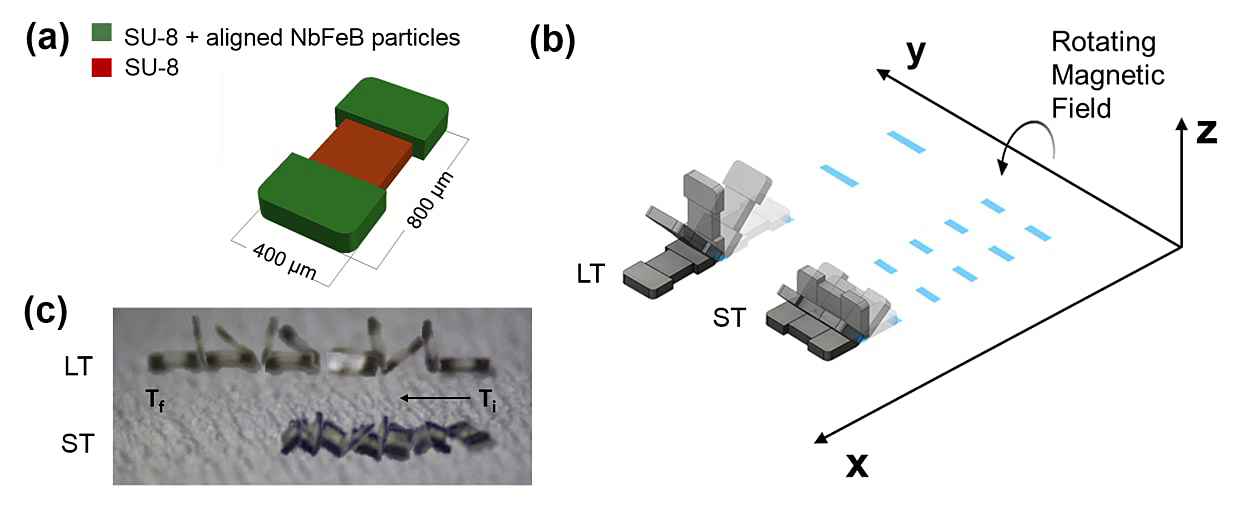
Tiny robots hold promise of better healthcare treatments
Tiny little machines small enough to travel through the human body, with blood cells along veins, for example, have long been one of the goals of technologists in healthcare science.
In the 1966 film Fantastic Voyage, a submarine and its crew are shrunk to microscopic size and inserted into the body of a patient to perform brain surgery.
This may have seemed total fantasy at the time, but technology has advanced so much that it almost seems like a realistic goal now.
While we may have to wait a little longer to be able to shrink humans – as seen in Downsizing – building miniature machines is well within the capabilities of technologists today, and that’s not even considering the possibilities of nanotechnology.
Nanotechnology generally deals with objects of dimensions smaller than 100 nanometres – a nanometre being one-billionth of a metre.
There are some advances being made on that scale, but it may be many years before research in this field leads to commercial solutions.
But already there are one or two machines that look like they could be put into real-world use.
For example, a tiny nanobot less than 5 millionths of a metre long was shown by researchers at the University of California San Diego.
Jinxing Li, of UCSD, said: “The nanobot is strong and can propel itself at speeds of up 59.6 µm/s in water, which is around 12 body lengths per second, at a magnetic frequency of 25 Hz.
“It can rapidly reach a desired location and so might be used in many biomedical applications. These include localized diagnostics and treatment – by propagating through the bloodstream to detect cancer cells, for example, or travelling through arteries to remove blood clots.”
Also, the “micro scale” – which probably means around the millimetre scale – is seeing some interesting developments which could become commercially available much sooner.
Recently, researchers at Seoul University demonstrated a tiny robot that was just a few centimetres long and about as complex as a paper-clip but can power itself.
It’s possible that the miniature device could become even smaller by the time it’s commercially released, and be made suitable for surgical applications.
More recently, a tiny robot smaller than the head of a pin, called the microTum, was shown by researchers at the Purdue University. (See video below.)
MicroTum is designed to deliver drugs to a specified location through the use magnets.
Associate professor and director of Purdue’s Multi-Scale Robotics and Automation Lab David Cappelleri says: “Robotics at the micro and nanoscale represent one of the new frontiers in intelligent automation systems.”
At the same time as these tiny mechanical devices are being developed, a new generation of software is offering new possibilities for controlling and coordinating robotic swarms.
Many of the tiny robots – nanoscale or microscale – will probably be used in batches of more than one, partly because the area within the human body that requires treatment will be much larger than the machine itself and partly because the devices themselves will not be able to carry enough drugs on their own.
Computer scientists at Georgia Tech, led by Dana Randall, have published a new algorithm that is said to simplify the instruction set required to control large swarms of tiny robots, or smart particles, also dubbed “smarticles”.
As quoted in Scientific American, Randall says: “Our whole perspective is: What’s the simplest computational model that will achieve these complicated tasks?
“We’re looking for elegance and simplicity.”
Another long-established project, led by Sabine Hauert, of Hauert Lab, is looking to develop nanorobots that can fight cancer within the human body.
Although Hauert develops larger swarm robotics systems – featuring robots the size of hockey pucks – she also outlined an approach to cancer treatment using smart particles.
In a paper published a couple of years ago with research partner Sangeeta Bhatia, Hauert wrote: “Nanoparticles are designed to selectively deliver therapeutics and diagnostics to tumors.
“Their size, shape, charge, material, coating and cargo, determine their individual functionalities.
“A systems approach could help predict the behavior of trillions of nanoparticles interacting in complex tumor environments.”
